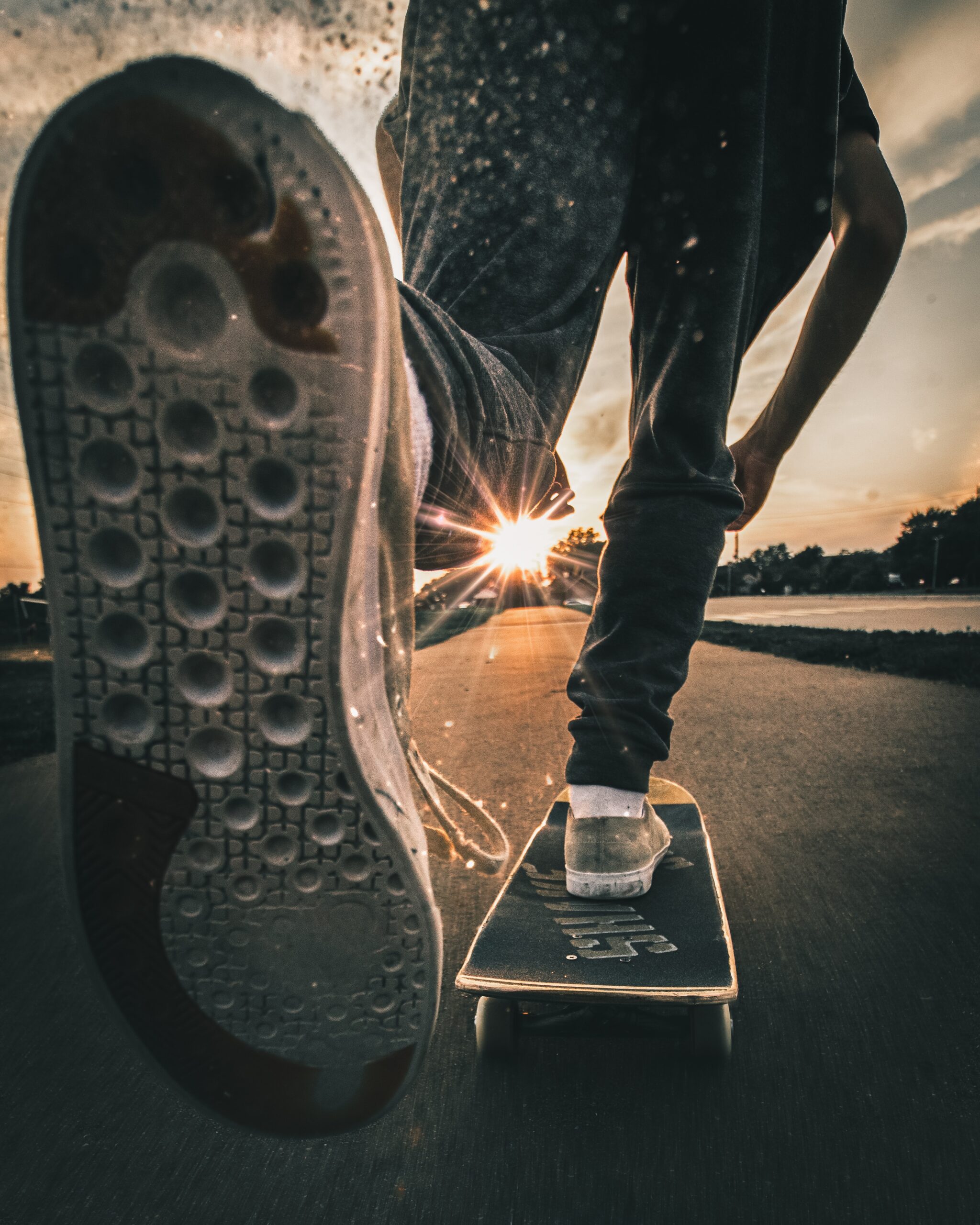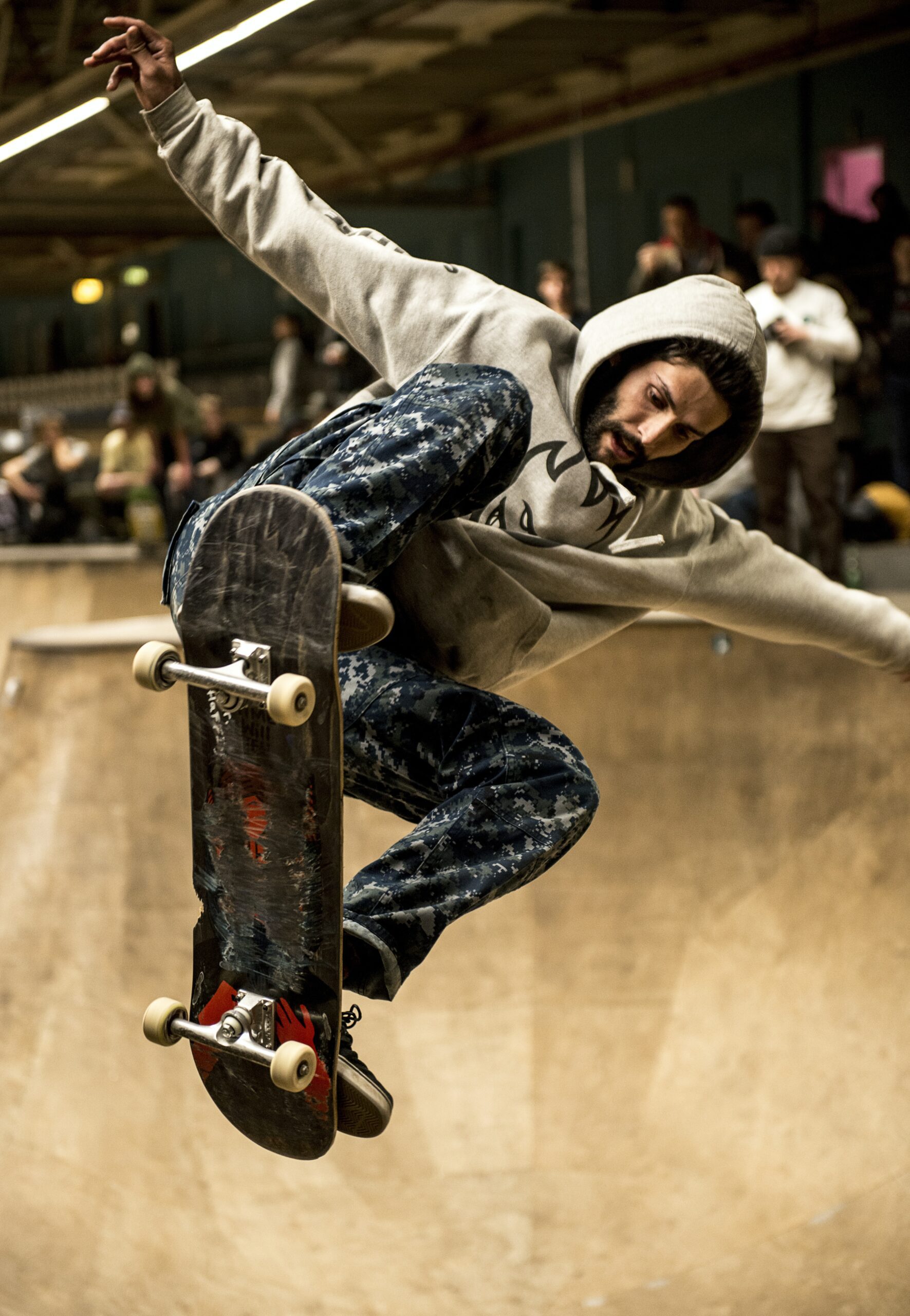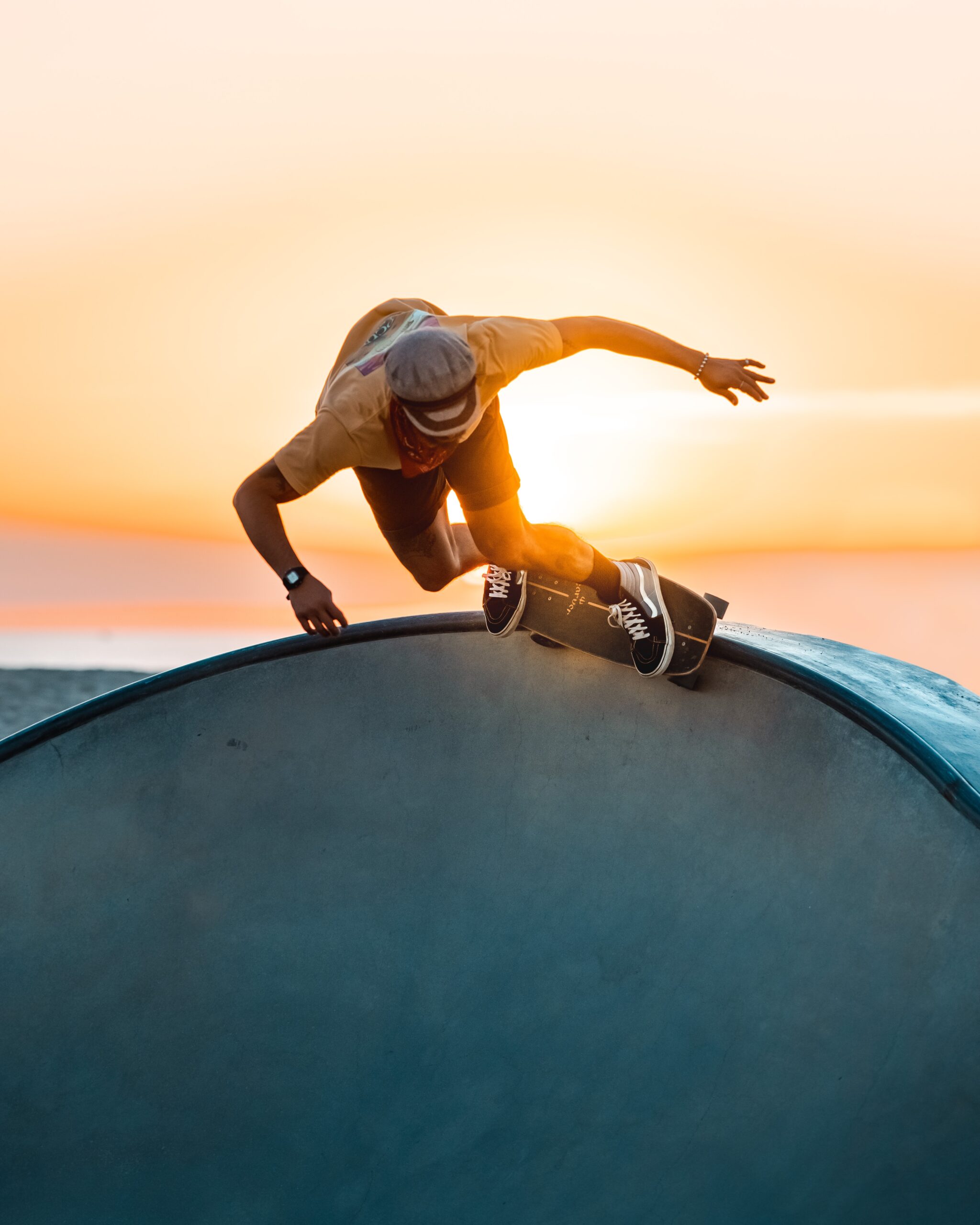Skateboarding manuals are a crucial aspect of mastering the art of skateboarding, and if you’re here, it’s clear that you’re eager to improve your skills. Whether you’re a beginner or an experienced skateboarder looking to enhance your manual game, this article will provide you with a comprehensive guide on the best strategies to conquer this challenging maneuver. By incorporating these tips into your practice routine, you’ll be well on your way to effortlessly gliding through manuals and impressing your friends at the skate park in no time. So, grab your skateboard and let’s get started!
Choosing the Right Skateboard
Skateboarding manuals require a skateboard that is suitable for balancing and maneuverability. When choosing a skateboard, you need to consider the type of skateboard, the appropriate deck size, the right trucks, the suitable wheels, and proper bearing selection.
Consider the Type of Skateboard
There are various types of skateboards available, including street skateboards, cruiser skateboards, and longboards. For mastering the art of skateboarding manuals, a street skateboard would be the most suitable choice. Street skateboards are designed for tricks and offer optimal control and maneuverability.
Select the Appropriate Deck Size
Deck size plays a crucial role in skateboarding manuals. A wider deck provides more stability, which can be beneficial for beginners. However, it may be slightly more challenging to maneuver. On the other hand, a narrower deck offers increased responsiveness and maneuverability, making it ideal for intermediate or advanced skaters. Consider your skill level and personal preference when selecting the appropriate deck size.
Choose the Right Trucks
Trucks are the metal T-shaped components that attach the wheels to the skateboard deck. When it comes to manualing, having the right trucks is essential. You need trucks that are not too loose or too tight, as they affect the board’s stability and responsiveness. Experiment with different truck tightness levels to find the perfect balance that allows you to execute smooth and controlled manuals.
Pick the Suitable Wheels
The wheels you choose can significantly impact your ability to perform manuals. For beginners, larger and softer wheels are recommended as they provide better stability and a smoother ride. Softer wheels also offer more grip, making it easier to maintain balance during a manual. As you progress, you may opt for smaller and harder wheels that offer improved maneuverability and control.
Ensure Proper Bearing Selection
Bearing quality directly influences the skateboard’s speed and performance. When it comes to manualing, having high-quality bearings is crucial. Look for bearings with a high ABEC rating, as they provide better speed and durability. Additionally, ensure that your bearings are regularly cleaned and lubricated to maintain optimal performance.
Maintaining Proper Body Position
Proper body position is essential for maintaining balance and executing skateboarding manuals effectively. It involves understanding the balanced stance, distributing weight correctly, aligning your shoulders, and practicing a low center of gravity.
Understanding the Balanced Stance
In skateboarding, the balanced stance refers to having an equal distribution of weight on both feet. To achieve a balanced stance, position your feet shoulder-width apart, with your toes slightly angled forward. Keep your knees slightly bent, preparing your body for any adjustments needed during a manual.
Learning to Distribute Weight Correctly
To maintain balance during a manual, it is crucial to distribute your weight correctly. The majority of your weight should be centered over the two trucks, with a slight emphasis on your back foot. This distribution allows for better control and stability while executing the manual.
Keeping Your Shoulders Aligned
Aligning your shoulders with the board is another crucial aspect of maintaining proper body position. Your shoulders should remain parallel to the board throughout the manual. This alignment helps maintain balance and prevents your body from leaning too far in any direction, which could result in loss of control.
Practicing Maintaining a Low Center of Gravity
Maintaining a low center of gravity is essential for stability and control during manuals. Bend your knees slightly and keep your body positioned close to the skateboard. This lower center of gravity provides better balance and maneuverability, allowing you to react quickly to any shifts in weight.

Developing Balancing Skills
To master the art of skateboarding manuals, developing balancing skills is crucial. It involves mastering basic skateboarding balance, practicing standing manual, progressing to moving manual, and improving balance on different surfaces.
Mastering Basic Skateboarding Balance
Before attempting manuals, it is essential to master basic skateboarding balance first. Spend time practicing riding the skateboard, getting comfortable with pushing off, and maintaining balance while moving. This foundation will provide you with the necessary stability and confidence to progress further.
Practicing Standing Manual
Once you have a solid foundation of balance, start by practicing the standing manual. This involves shifting your weight backward while maintaining balance on the back wheels. Start with short durations and gradually increase the length of time you can hold the position. Focus on keeping your body aligned and your center of gravity low.
Progressing to Moving Manual
After gaining confidence in the standing manual, it’s time to progress to the moving manual. Start by practicing on flat ground, gradually increasing your speed as you become comfortable. Remember to distribute your weight properly and maintain a balanced stance throughout the manual. Develop a feel for the board’s balance, and practice adjusting your body position to maintain control.
Improving Balance on Different Surfaces
To become a well-rounded skateboarder, it’s essential to improve your balancing skills on various surfaces. Experiment with different terrains such as ramps, curbs, and banks. Each surface will present unique challenges, helping to enhance your ability to maintain balance in different skateboarding scenarios.
Techniques for Manualing
Mastering manualing techniques will greatly contribute to your skill in executing skateboarding manuals. It involves understanding the beginner’s guide to manualing, learning to pop the manual, maintaining balance with manual pressure, and mastering the manual correction.
Beginner’s Guide to Manualing
If you are new to manualing, it’s essential to start with the fundamentals. Begin by finding a smooth and level surface. Push off and gain a comfortable speed, then shift your weight backward, lifting the front wheels off the ground. Focus on maintaining your balance and keeping the manual position for as long as possible before safely bringing the front wheels back down.
Learning to Pop the Manual
Popping the manual is a technique that involves using your back foot to quickly raise the front wheels off the ground. This technique helps in executing manuals while moving or on uneven surfaces. Practice popping the manual by exerting a quick and controlled pressure with your back foot to lift the front wheels, and then adjust your body position to maintain balance.
Maintaining Balance with Manual Pressure
While performing a manual, it’s crucial to apply the right amount of pressure to the board. Too much pressure can result in an abrupt stop, while too little can cause the wheels to touch the ground. Continuously adjust the pressure applied with your feet to keep the board balanced and maintain the manual position.
Mastering the Manual Correction
Maintaining balance during a manual can be challenging, as minor adjustments are needed to counterbalance any shifts in weight. Mastering manual correction involves developing the ability to react quickly and make subtle adjustments to keep the manual going smoothly. Practice flicking your ankles and shifting your weight to correct any imbalances, ensuring a controlled and steady manual.

Strengthening Leg Muscles
Having strong leg muscles is essential for executing skateboarding manuals. Strengthening your legs allows for better control and stability. Incorporate leg exercises into your routine, practice manual-specific exercises, add plyometric movements, and increase endurance with cardiovascular activities.
Incorporating Leg Exercises into Your Routine
To strengthen your leg muscles, include exercises such as squats, lunges, and calf raises in your regular workout routine. These exercises target the quadriceps, hamstrings, calves, and glutes, providing the necessary strength and power for executing manuals.
Practicing Manual-Specific Exercises
In addition to general leg exercises, there are specific exercises that can target the muscles used in skateboarding manuals. These exercises include practicing manual balances on a balance board or practicing shifting weight between the front and back foot on a stationary skateboard. These exercises simulate the movements and muscle engagement required during a manual, helping to improve your overall strength and control.
Adding Plyometric Movements to Improve Power
Plyometric exercises are explosive movements that can improve your leg power and help you generate more force while performing manuals. Incorporate exercises such as box jumps, squat jumps, and power skips into your training routine. These movements will increase your leg strength and explosive power, enhancing your ability to execute manuals effectively.
Increasing Endurance with Cardiovascular Activities
Endurance plays a vital role in maintaining stability and control during skateboarding manuals. Engage in cardiovascular activities such as cycling or running to improve your endurance. Building your endurance will allow you to maintain balance for longer durations, increasing the complexity and length of the manuals you can perform.
Building Core Strength
A strong core is crucial for maintaining balance and stability during skateboarding manuals. By engaging your core muscles, you will have better control over your body positioning and weight distribution. Understand the importance of a strong core, incorporate core exercises into your training, and utilize balance boards and stability trainers.
Importance of a Strong Core for Manualing
A strong core is essential for manualing as it provides stability and helps maintain proper body alignment. The core muscles, including the abdominals, lower back, and obliques, play a significant role in controlling and stabilizing the body during manuals. By strengthening your core, you create a solid foundation for executing manuals with precision and control.
Engaging Core Muscles during Manualing
During a manual, consciously engage your core muscles to maintain balance and stability. Focus on activating your abdominal and lower back muscles by pulling your belly button towards your spine. Engaging your core will help you better control your body positioning and react quickly to any shifts in weight.
Incorporating Core Exercises into Your Training
To build core strength, incorporate exercises such as planks, Russian twists, and bicycle crunches into your training routine. These exercises target the core muscles, helping to improve stability and control during manuals. Gradually increase the intensity and duration of your core exercises to continually challenge and strengthen your core muscles.
Utilizing Balance Boards and Stability Trainers
Balance boards and stability trainers are excellent tools for building core strength specifically for skateboarding manuals. These devices challenge your balance and force your core muscles to engage to maintain stability. Incorporate balance board exercises into your training routine to improve your balance and core strength, translating into better manualing skills.

Progression and Practice
Mastering the art of skateboarding manuals requires progression and consistent practice. It involves setting achievable goals, breaking down the skill into steps, gradually increasing the difficulty level, and maintaining consistent and regular practice sessions.
Setting Achievable Goals
Start by setting achievable goals that align with your current skill level. Break down your goals into smaller milestones, making them more manageable and less daunting. Setting achievable goals allows for a sense of accomplishment and motivation as you progress through each milestone.
Breaking Down the Skill into Steps
To effectively master skateboarding manuals, break down the skill into smaller steps. Begin with mastering basic balance and then progress to standing manuals, moving manuals, and eventually more advanced variations. Breaking down the skill into steps helps build a solid foundation and allows for a methodical and progressive approach to learning.
Gradually Increasing Difficulty Level
As you become comfortable with each step, gradually increase the difficulty level to challenge yourself. Increase the duration of your manuals, practice on different surfaces or incorporate obstacles into your runs. Pushing yourself outside of your comfort zone gradually will improve your skills and help you progress to more advanced manualing techniques.
Consistent and Regular Practice Sessions
Consistency is key when it comes to mastering skateboarding manuals. Set aside dedicated time for practice sessions regularly. Consistent practice allows muscle memory to develop, enhancing your ability to execute manuals with fluidity and precision. Aim for frequent practice sessions rather than sporadic attempts to maximize progress.
Analyzing and Learning from Mistakes
Analyzing and learning from mistakes is a valuable part of the learning process. During your manualing journey, it’s important to identify common mistakes, understand the root causes, learn from failed attempts, and seek feedback and guidance.
Identifying Common Mistakes
Common mistakes while manualing include losing balance, overcorrecting, leaning too far forward, or not distributing weight evenly. By identifying these mistakes, you can focus on addressing them through targeted practice and adjustments to your technique.
Understanding the Root Causes
Understanding the root causes is essential for overcoming common mistakes. Factors such as improper weight distribution, lack of body control, or fear can contribute to mistakes. Reflect on your technique and analyze what might be causing specific mistakes. By addressing the root causes, you can make the necessary adjustments to improve your manualing skills.
Learning from Failed Attempts
Embrace failed attempts as opportunities for growth and learning. Each unsuccessful manual provides valuable feedback on what needs improvement. Take note of the specific areas where you struggled and analyze the factors that contributed to the unsuccessful attempt. Learning from failed attempts helps refine your technique and build resilience in the face of challenges.
Seeking Feedback and Guidance
Don’t hesitate to seek feedback and guidance from experienced skateboarders or instructors. They can provide valuable insights and tips to help you overcome obstacles. A fresh pair of eyes may spot areas of improvement that you may have overlooked. Embrace feedback and incorporate it into your practice sessions to enhance your manualing skills.
Overcoming Fear and Building Confidence
Fear can be a significant barrier to mastering skateboarding manuals. Overcoming fear and building confidence is essential for progressing and pushing your limits. Acknowledge and understand fear, gradually expose yourself to challenges, build confidence through successful attempts, and utilize visualization techniques and positive self-talk.
Acknowledge and Understand Fear
Fear is a natural response when attempting challenging maneuvers like skateboarding manuals. Acknowledge and understand that fear is a normal part of the learning process. Recognize that fear can be a self-protective mechanism, but also embrace the opportunity for growth and improvement that lies beyond fear.
Gradual Exposure to Challenges
To overcome fear, gradually expose yourself to increasing challenges. Start with smaller, less intimidating manuals and progressively work your way up to more complex ones. Savor each successful manual as a confidence booster and use it as motivation to take on more significant challenges. Gradual exposure allows for a steady development of both skills and confidence.
Building Confidence through Successful Attempts
Confidence is built through successful attempts and achievements. Celebrate each successful manual and recognize your progress. The more you accomplish, the more your confidence will grow. Use these small victories as stepping stones to tackle more demanding manuals and build your skills and confidence along the way.
Visualizing Success and Positive Self-Talk
Visualization and positive self-talk can be powerful tools in overcoming fear and building confidence. Before attempting a manual, visualize yourself successfully completing the maneuver. Imagine the feeling of balance, control, and achievement. Additionally, use positive self-talk to reinforce confidence and banish self-doubt. Remind yourself of past successes and affirm your ability to master skateboarding manuals.
Safety Considerations
Skateboarding, including manualing, involves risks. Prioritizing safety is crucial for enjoying the sport and preventing injuries. Always wear proper protective gear, choose a safe practice location, avoid dangerous obstacles and surfaces, and learn how to fall correctly.
Wearing Proper Protective Gear
Protective gear is essential for minimizing the risk of injury while skateboarding. Always wear a helmet to protect your head in case of falls or accidents. Additionally, use knee and elbow pads to protect your joints and wrist guards to prevent wrist injuries. Proper protective gear provides peace of mind and allows you to focus on mastering your manualing skills.
Choosing a Safe Practice Location
Selecting a safe practice location is vital for minimizing potential hazards. Look for skate parks or designated skateboarding areas with a smooth and even terrain. Avoid areas with heavy traffic or obstacles that could pose dangers to both yourself and others. Practice in a controlled environment to ensure your safety while mastering skateboarding manuals.
Avoiding Dangerous Obstacles and Surfaces
When practicing manualing, be aware of dangerous obstacles and surfaces that can increase the risk of injury. Avoid rough or uneven surfaces, as they can cause the wheels to catch or lead to loss of balance. Steer clear of obstacles such as rocks, cracks, or debris that can cause accidents. Identifying and avoiding potential hazards is key to staying safe while manualing.
Learning How to Fall Correctly
Despite precautions, falls are inevitable in skateboarding. Learning how to fall correctly can minimize the risk of serious injuries. When falling, aim to distribute the impact across your body by rolling or sliding rather than absorbing the impact with one specific area. Practice falling techniques in a safe environment to train your body to react instinctively and protect yourself during unexpected falls.
By following these strategies and consistently practicing, you can master the art of skateboarding manuals. Remember to prioritize safety, progress at your own pace, and enjoy the journey of improvement. With dedication and perseverance, you’ll soon be executing smooth and controlled manuals with skill and finesse. Happy skateboarding!

